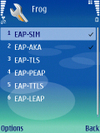In part one of this miniseries on femtocells I’ve been looking at the benefits for mobile operators. This part deals with why users would put a femtocell into their home.
From the user’s point of view the advantages of femtocells are less clear to me. While the user shares all of the operator advantages discussed in a previous blog entry, increasing customer retention and thus churn is not necessarily in the interest of users since it could reduce competition. Also, it is unlikely that all family members use the same mobile operator and thus could benefit from a single femto cell.
In addition, mobile multimedia users are usually still early adopters which tend to use sophisticated phones, of which many include Wifi. With such phones a femto cell for multimedia content is not required since Wifi offers a similar or better experience for Internet content. Multimedia services offered by mobile network operators, however, are usually not available over Wifi which, from the end user perspective, is not a huge loss since early adopters tend to use Internet services rather than multimedia services of operators that are usually more expensive or come with limitations not acceptable to such users.
An advantage not mentioned before is that better 3G in-house penetration would increase call establishment success rate for 3G video calls since mobiles reselecting to the 2G network because reception quality is better can not be used for incoming or outgoing video calls. Thus, femtocells could become an important element in the future to make video calls more popular as the service still fights with the famous hen/egg problem of 3G network availability and number of users with compatible handsets.
Monetary incentives could persuade users to install femto cells. Operators could for example offer cheaper prices for voice calls that are handled via the femto cell. Also, the operator could propose to share revenue with femto ‘owners’ if other subscribers use the cell for voice and data communication instead of a macro cell.
Often the argument is brought forward that femtocells allow to market single phone solutions in which the user no longer has a fixed line phone and uses his mobile phone both at home and on the go. However, such solutions which use the macro layer instead of femtocells have already been available for several years in countries such as Germany (O2’s famous home zone for example) and are already very popular. Also, it is unlikely that mobile network operators would have competitive prices for all types of calls so many users would still use a SIP phone or software client on a PC for such calls at home. Calling a mobile number is still more expensive in most parts of the world excluding the U.S.A. than calling fixed line phones so single phone offers have to include a fixed line number for the mobile phone in order. Again, this is already done in practice for example by O2 in Germany for a number of years but femtocells might enable the mobile network operator to deliver such services cheaper than how it is currently done over the macro layer.
It should alsobe mentioned that using a femtocell would have a configuration and usability advantage over SIP Wifi phones. However, it is likely that the configuration process for SIP and Wifi on handsets will improve over the next few years thus decreasing this advantage.
To be continued
So much for now on the user’s point of view on femtocells. In the third part, to come soon, I will take a look at the technical background and hurdles.
As always, comments are welcome!


